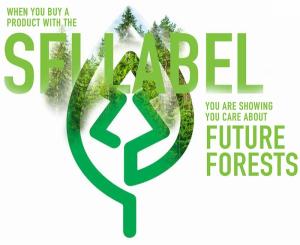
Wood is a fire-resistant building material
29 October, 2019
Today we are going to talk about “Douglas Fir”!
16 April, 2020Constructions with certified wood.
RF Arraiano Arquitetura e Construção, Lda is an environmentally conscious company and as such, the wood used in its constructions comes from SFI (Sustainable Forestry Initiative) certified forests.
The wood we use comes from SFI (Sustainable Forestry Initiative) certified forests. This independent non-profit organization is dedicated to sustainable forest management, protecting biodiversity, endangered species and water quality. SFI certified house is valid by internationally accredited entities following an audit.
Every 5 years, landowners, conversion experts, academic and indigenous groups meet to reflect on the latest scientific advances and feedback received. To maintain certifications, certified companies undergo annual audits by external certification bodies. By choosing to use certified wood, we are supporting the sustainable development of our forests so that future generations can also benefit from these green areas.

For information, here are the 13 objectives established by the SFI. One of the most impressive improvements is the percentage of trained professionals able to source wood under the SFI program, this number is now fixed at 95%, which means that people are now aware of sustainable forestry practices and can use their knowledge to improve forests. In 1994 this figure was only 35%. 1- Biodiversity Conservation 2- Adherence to Best Management Practices 3- Use of Qualified and Professional Resources in Wood Extraction 4- Legal and Regulatory Compliance 5- Science, Technology and Forestry Research 6- Training and Education 7- Community Involvement and Sensitization to Land Owners 8- Public Land Management Responsibilities 9- Communication and Public Disclosure 10- Management and Assessment of Continuous Improvement 11- Promote the Conservation of Biological Diversity, “Crucial Points” of Biodiversity and Wild Areas of High Biodiversity. 12- Prevention of Controversial Origins, Including Illegal Logging 13- Prevention of Controversial Origins, including Fiber Obtained from Non-Effective Social Areas For more information see the website:
Certified Forests
The wood we use comes from SFI (Sustainable Forestry Initiative) certified forests. This independent non-profit organization is dedicated to sustainable forest management, protecting biodiversity, endangered species and water quality. SFI certified house is valid by internationally accredited entities following an audit.
Every 5 years, landowners, conversion experts, academic and indigenous groups meet to reflect on the latest scientific advances and feedback received. To maintain certifications, certified companies undergo annual audits by external certification bodies. By choosing to use certified wood, we are supporting the sustainable development of our forests so that future generations can also benefit from these green areas.

Standards for responsible sourcing (wood)
Through global forestry management, manufacturers must ensure that the basic materials they use are from legal and eco-responsible sources. Primary producers must be controlled and certified in accordance with the SFI Standard 2015-2019. The SFI organization promotes forestry practices through 14 principles, 13 objectives, 21 performance measures and 55 indicators. This document goes into the details and influences a growing number of landowners in the face of increasing demand from manufacturers to use only greener products, according to their consumers.The objectives of responsible sourcing standards:
For information, here are the 13 objectives established by the SFI. One of the most impressive improvements is the percentage of trained professionals able to source wood under the SFI program, this number is now fixed at 95%, which means that people are now aware of sustainable forestry practices and can use their knowledge to improve forests. In 1994 this figure was only 35%. 1- Biodiversity Conservation 2- Adherence to Best Management Practices 3- Use of Qualified and Professional Resources in Wood Extraction 4- Legal and Regulatory Compliance 5- Science, Technology and Forestry Research 6- Training and Education 7- Community Involvement and Sensitization to Land Owners 8- Public Land Management Responsibilities 9- Communication and Public Disclosure 10- Management and Assessment of Continuous Improvement 11- Promote the Conservation of Biological Diversity, “Crucial Points” of Biodiversity and Wild Areas of High Biodiversity. 12- Prevention of Controversial Origins, Including Illegal Logging 13- Prevention of Controversial Origins, including Fiber Obtained from Non-Effective Social Areas For more information see the website:
